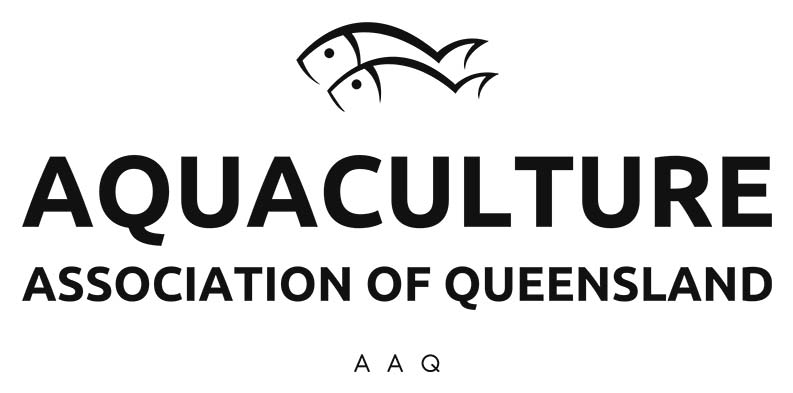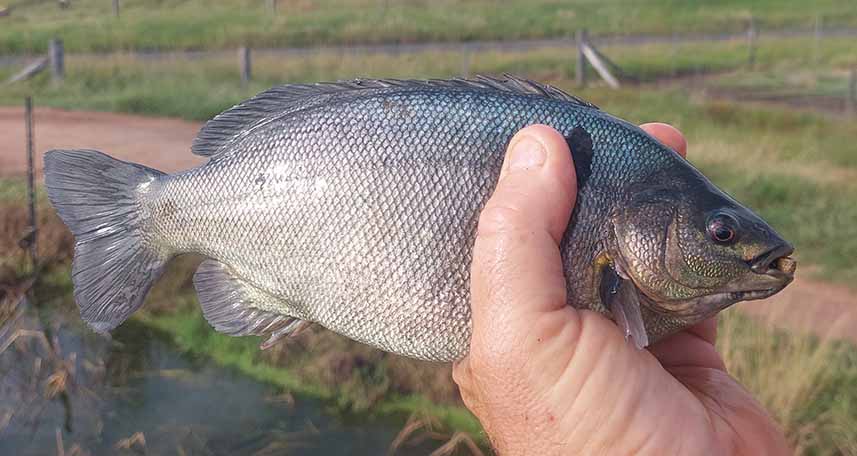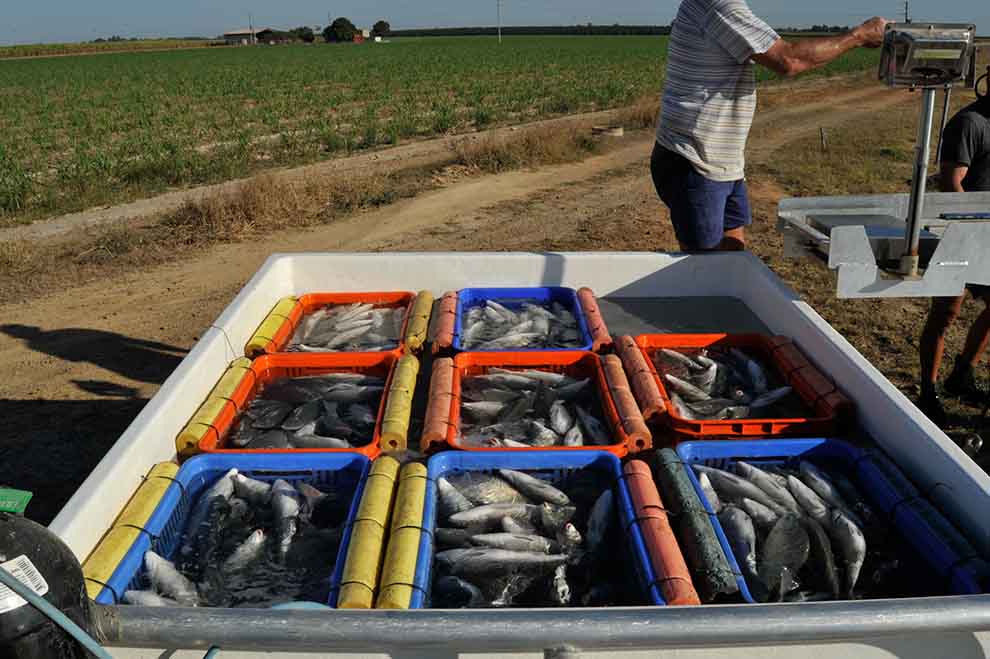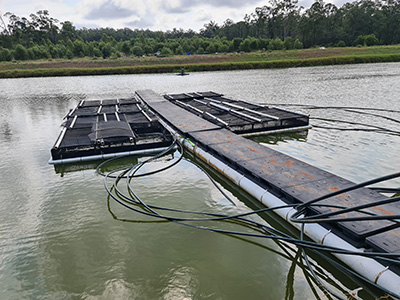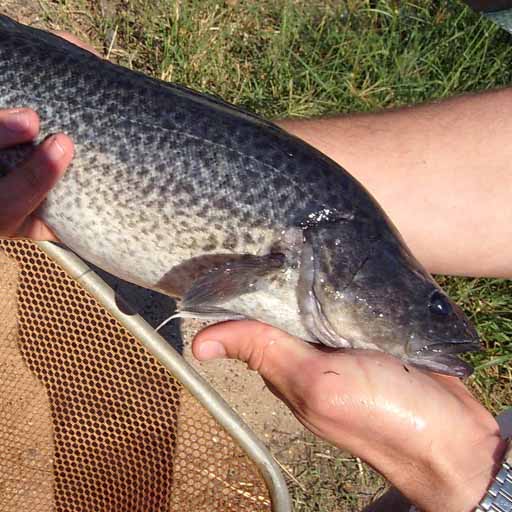Grow Out
Australia has an amazing diversity of freshwater fish species, and some of these are ideal candidates for aquaculture.
Grow Out
Australia has an amazing diversity of freshwater fish species, and some of these are ideal candidates for aquaculture. Our dedicated growers buy fingerlings from approved local hatcheries and utilise a range of grow-out techniques to produce premium table fish to supply markets around Australia.
Some of the main species currently cultured by AAQ members are detailed below. Further information on freshwater fish species used in aquaculture and the freshwater aquaculture industry can be found by visiting the Aquaculture page of the Fisheries Queensland website:
(https://www.business.qld.gov.au/industries/farms-fishing-forestry/fisheries/aquaculture).


Silver Perch
Silver perch (Bidyanus bidyanus) is a freshwater fin fish native to the Murray-Darling River system of Australia. They are well suited to aquaculture systems as their natural characteristics result in fish that is hardy, rapid growing and readily accepting of artificial diets, typically in pellet form. Fingerlings are readily available from hatcheries for stocking and aquaculture production. Silver Perch generally take about 12-18 months to reach a saleable size in aquaculture production systems. Depending on the market they are intended for they are typically sold from about 500 grams up to 1.2 kilograms. Silver Perch are a well-regarded, good quality eating fish that has secured a loyal following in domestic markets, particularly in Melbourne, Sydney and Brisbane. They are usually sold as either live or whole chilled fish to wholesalers and restaurants. Silver Perch have high levels of healthy Omega-3 fatty acids and are also well suited to smoking.
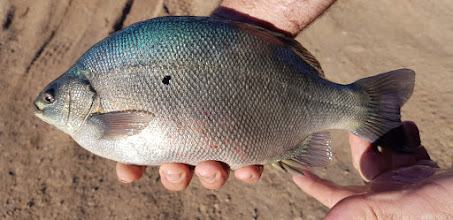
Jade Perch
Scortum barcoo, commonly known as Barcoo Grunter or Jade Perch have a distinct jade colour that can be seen when the light catches the scales along the dorsal area of the fish. This jade colouring has led members of the aquaculture association and others to adopt this name for marketing purposes.
Jade Perch are a freshwater fin fish native to the Lake Eyre and Bulloo-Bancannia catchments of Australia. They are a hardy and quick growing fish though they do prefer warmer conditions. Fingerlings are readily available from hatcheries for aquaculture production but there are restrictions on areas where this species can be stocked. Jade Perch generally take about 10-15 months to reach a saleable size in aquaculture systems. They are primarily sold as live fish in domestic markets such as Sydney and Brisbane and range from 500 grams to over 1 kilogram. They have similar eating characteristics to Silver Perch and high levels of healthy omega 3 oils making them a great choice for consumers. Jade perch are also well suited to smoking.

Murray Cod
Murray Cod (Maccullochella peelii) are Australia’s largest freshwater fish and arguably the most iconic. They occur in the Murray Darling basin and water bodies feeding into the system. Their range is from Southern Queensland right the way through to South Australia. They are primarily produced in outdoor systems; however, some are also grown indoors throughout their whole life cycle. Free ranging in outdoor ponds can be challenging due to their highly predatory nature so generally outdoor facilities have them cultured in a wide range of raceway systems. Murray Cod are commonly sold as a larger size product than other freshwater native species, with fish between 1.5 and 3 kg being the most popular sales range. They generally take around 2 years to attain a size of 2 kg. Murray Cod are an excellent table fish and over the past few years Murray Cod have been on the menus of many fine dining restaurants through the east coast of Australia and that trend is not decreasing. The product is highly versatile due to its excellent texture and whether it be fillets or whole fish it can be consumed in a range of ways including fillets, steaming, baking and sashimi.

Barramundi
The barramundi (Lates Calcarifer) industry in Queensland is a vital component of the state’s aquaculture sector. Queensland’s tropical climate provides ideal conditions for barramundi farming, with its warm waters and abundant sunshine promoting rapid growth. The industry primarily centres around freshwater aquaculture ponds and recirculating aquaculture systems (RAS), which allow for controlled environments conducive to barramundi farming. Queensland’s pristine water sources and strict environmental regulations ensure the production of high-quality barramundi while minimizing ecological impacts. Barramundi farming in Queensland has experienced significant growth in recent years, driven by increasing demand both domestically and internationally for this fish species. The industry contributes to the state’s economy by providing employment opportunities in rural areas and generating revenue through exports and domestic sales. Additionally, advancements in technology and sustainable farming practices have led to improved efficiency and environmental sustainability within the industry. Queensland’s barramundi industry continues to thrive, supported by ongoing research and innovation aimed at further enhancing production techniques and ensuring its long-term viability.
AAQ Membership Options
Associate ($50)
Associate membership is open to those who do not meet the requirements of full membership but actively support or have an interest in the industry. You receive the association newsletter and have the opportunity to attend workshops/conferences etc.
Full Membership ($75)
Full membership is open to those who hold an aquaculture license or development approval. These members are considered commercial operators within the industry (grow out or hatcheries).
Copyright and Trademarks.
The Aquaculture Association of Queensland Inc. (AAQ)
The Aquaculture Association of Queensland Inc., (AAQ) are either the owner or licensed user of the copyright in the material on this site. You may not reproduce, adapt, upload, link, frame, broadcast, distribute or in any way transmit the material on this site without our or AAQ’s written consent, other than to the extent necessary to view the material or as permitted by law.

